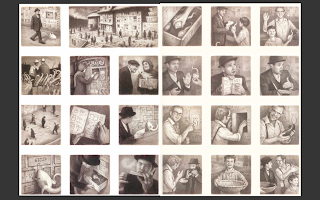Blog Post #3: The Comic Strip

Blog Post #3 The Comic Strip Looking at the older comics such as Little Nemo and Krazy Kat I noticed that they have very different styles. Little Nemo has a very complex comic style using colors, dialogue bubbles, and descriptions for each panel. Reading the Little Nemo comics is very confusing because of the way the descriptions on the bottoms of the panel and not knowing if it is necessary to read the bottom of the panel first and then the dialogue or read all the dialogue at once and then the descriptions. Krazy Kat is a simpler comic using four panels and line drawings and very little dialogue. The comic strip Krazy Kat makes some jokes that I don’t understand but it could also be the humor of the time. There isn’t very much story in the Krazy Kat comic strip but it gives me a feeling of an early version of Tom and Jerry or Snoopy and Woodstock. Looking at some newer comics such as Peanuts by Charles Schulz wh...
